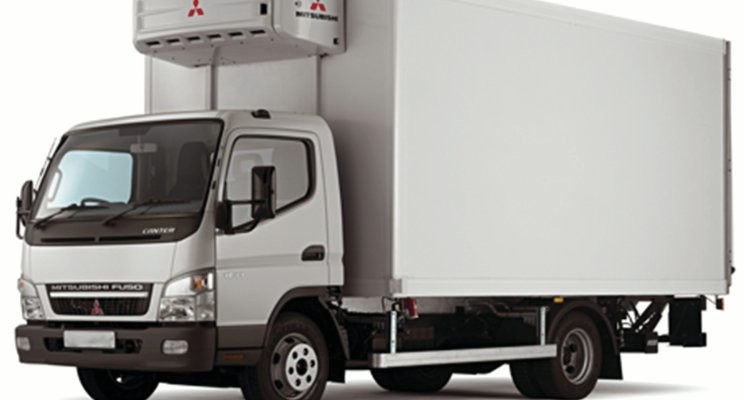Reliable Refrigerated Truck Companies for Your Cold Transport Needs
Wiki Article
Exactly How Refrigerated Trucks Run to Make Certain Safe and Reliable Shipment of Perishable Goods
Cooled vehicles play an important function in the supply chain, making sure that perishable products are carried securely and effectively. Utilizing innovative refrigeration modern technologies and robust insulation, these cars keep accurate temperature level control, which is important for maintaining the top quality of sensitive products.Introduction of Refrigerated Trucks
Cooled vehicles, commonly referred to as reefer trucks, play an essential function in the transport of disposable products across various industries. These customized cars are created to keep details temperature varieties, ensuring that items such as fresh fruit and vegetables, dairy products, meat, and drugs stay secure for intake and reliable use. The operation of refrigerated trucks is crucial in lowering putridity and extending the life span of temperature-sensitive products.Reefer vehicles are equipped with shielded freight locations that can maintaining reduced temperature levels, which can be readjusted according to the kind of products being transferred. The lorries normally make use of a refrigeration unit powered either by the vehicle's engine or an independent source of power, enabling for regular temperature control throughout transit.
In addition to temperature upkeep, these trucks are often made with innovative surveillance systems to track the inner environment, guaranteeing compliance with wellness and safety guidelines. Furthermore, cooled vehicles add significantly to the supply chain, enabling prompt shipments to consumers, merchants, and restaurants. Their crucial duty highlights the value of reputable transport solutions in today's global market, where quality is paramount.
Trick Refrigeration Technologies
Maintaining optimal temperature level control in cooled vehicles relies upon numerous vital refrigeration innovations that enhance efficiency and integrity. Among the most common systems is the vapor-compression refrigeration cycle, which utilizes a cooling agent to soak up warmth from the truck's interior, decreasing the temperature. This process includes a compressor, condenser, growth shutoff, and evaporator, operating in tandem to flow the cooling agent and preserve a regular climate.Another notable innovation is using eutectic plates, which keep and release thermal energy. These plates are loaded with a phase-change material that strengthens at a certain temperature, offering a secure cooling resource. This approach not only boosts power efficiency but likewise minimizes the demand for continual power supply during transit.
Additionally, progressed insulation materials, such as polyurethane foam, considerably enhance the thermal efficiency of chilled trucks, lessening temperature changes throughout filling and discharging. Some modern cooled vehicles also include telematics systems, enabling real-time tracking of temperature and efficiency, thus guaranteeing conformity with safety requirements. With each other, these modern technologies guarantee the secure transport of disposable products while maximizing operational efficiency and minimizing power consumption.
Temperature Level Control Systems
Effective temperature level control mechanisms are critical in making sure the honesty of disposable items throughout transportation. Cooled trucks utilize sophisticated modern technologies to keep regular temperature level varieties, protecting against putridity and making sure product safety and security. Central to these devices is the refrigeration unit, which operates utilizing vapor-compression or absorption refrigeration systems. These devices are developed to cool the air within the freight area efficiently and keep the called for temperature throughout the trip.In addition, contemporary refrigerated trucks are geared up with electronic thermostats and programmable temperature level monitoring systems. These systems permit real-time tracking of internal temperatures, supplying alerts if the temperature level drifts from the fixed range. This capacity is vital for conformity with health and wellness regulations.
Insulation additionally plays a crucial function in temperature control. Premium insulation products reduce warm exchange, maintaining the wanted internal problems. Air movement administration within the cargo area is engineered to make sure consistent temperature level distribution, preventing hotspots that might compromise product integrity.
Best Practices for Packing

This technique permits the temperature level control system to support, producing a suitable setting for disposable products. Avoid overwhelming and obstructing vents, as this can lead to temperature level variations and hotspots.
Making use of pallets or shelving can assist in arranging things, making certain that heavier items are positioned near the bottom to avoid squashing lighter products. In addition, it is essential to set apart different types of goods, especially those with differing temperature demands, to prevent cross-contamination and wasting.
Lastly, securing the tons with bands or webs will protect against movement throughout transit, consequently lowering the danger of damages and preserving the stability of temperature-sensitive items. By adhering to these finest techniques, operators can make sure safe and reliable distribution of disposable products while optimizing the efficiency of their cooled vehicles.
Challenges and Solutions in Transportation
One substantial issue is temperature level variations, which can take place due to tools malfunction or improper packing practices. Furthermore, road conditions and delays can further aggravate temperature level control problems, particularly during expanded transit times.Advanced telemetry can provide real-time temperature level data, informing chauffeurs to any kind of abnormalities. Training employees on best loading and unloading techniques can decrease the threat of temperature level variances.
An additional trick option includes route optimization. Using general practitioners and website traffic administration technologies can help motorists choose the most reliable courses, minimizing transit times and lessening direct exposure to unfavorable conditions. Collaborating with trustworthy logistics partners that focus on cold chain stability is also vital for ensuring that products stay within needed temperature arrays.

Verdict
In verdict, refrigerated vehicles play a vital duty in the secure and effective transport of disposable items. Utilizing innovative refrigeration technologies and efficient temperature level control mechanisms makes sure that items continue to be within called for temperature level varieties. Complying with finest techniques in packing and course optimization further improves shipment efficiency. Attending to difficulties through ingenious solutions is essential for keeping compliance with health and wellness regulations, eventually securing the integrity of delicate items throughout the supply chain.
Report this wiki page